19 Types of Mini Succulents (With Pictures)
-
Pete Ortiz
- Last updated:
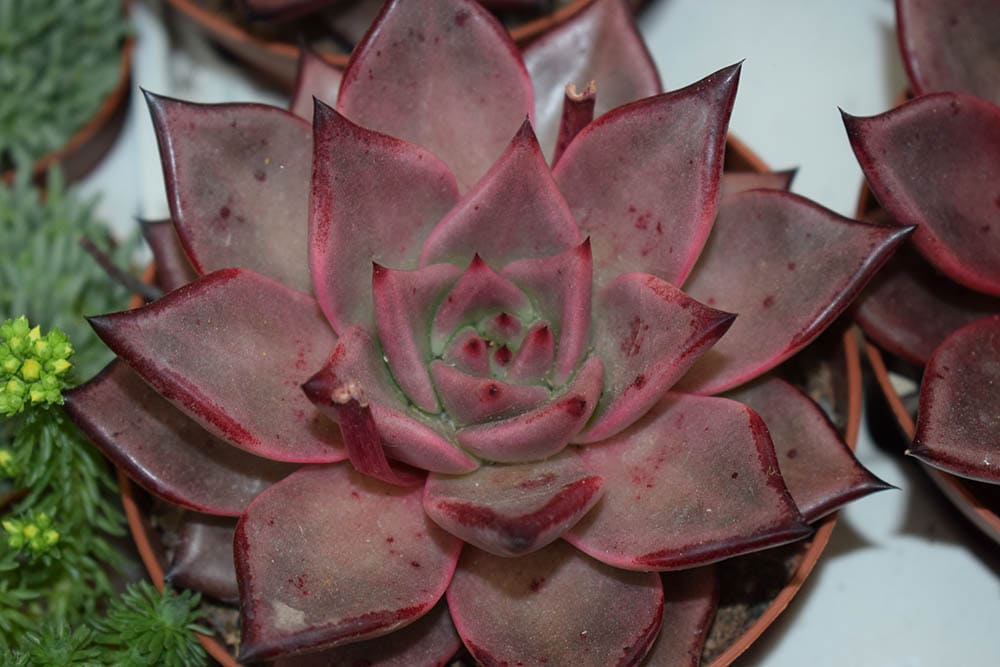
Plants are excellent additions to every home. They depict nature both indoors and outdoors. Succulents are among the best plants that you can grow in your garden or as houseplants using pots. But you may not have room or space for huge ones.
Lucky for you, there are numerous mini succulents that you can grow in pots or outside. Many are low maintenance and can thrive even with a little care.
This article takes you through adorable small succulents that you can add to your collection. They are drought-tolerant and ideal for a beginner plant owner.
The 19 Different Types of Mini Succulents
1. Echeveria Minima
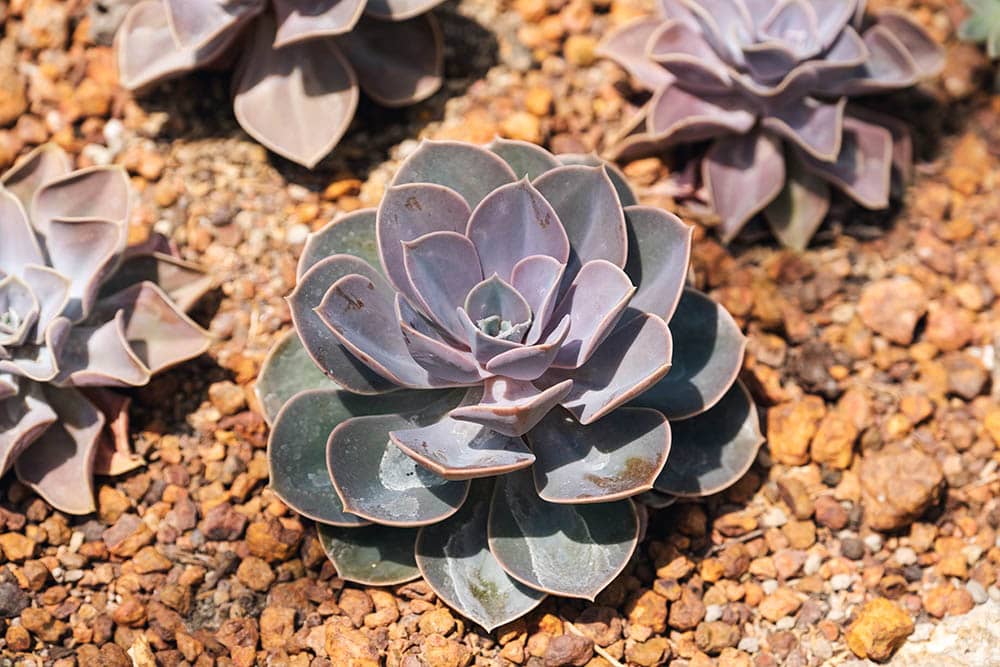
The Echeveria minima is a drought-tolerant miniature succulent native to Mexico. It is a favorite of succulent growers. This small plant is ideal if you want one small succulent per plant container. It isn’t a cold-hardy type of succulent and it thrives in a sunny area with USDA hardiness zones 9 to 11.
Echeveria minima only reaches about 5 inches tall. Each plant produces some small chubby rosettes that are blush in color. When the summer sun hits them, they turn to coral pink.
This succulent thrives outside, but can also be an indoor plant when placed on a south-facing window. It’s best grown in well-draining soil.
2. Little Missy (Sedum)
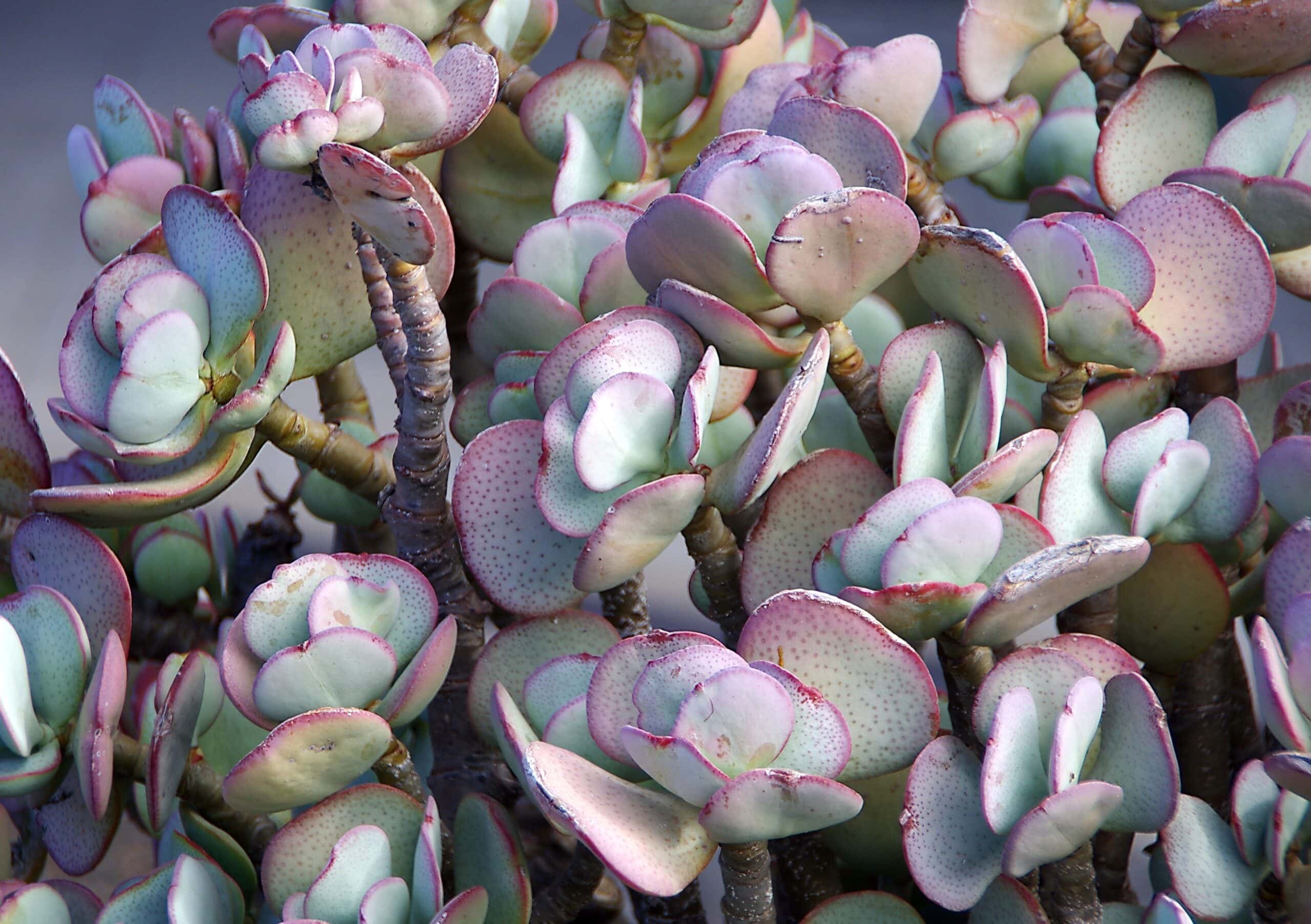
Little Missy is an evergreen mat-forming small succulent that you can grow indoors and outdoors. It produces rounded to ovate rosettes with gray green leaves. Each leaf has some pink flush and pale green margins.
This small succulent grows only 2 inches tall, producing tiny pink blooms in summer. The plant thrives in USDA hardiness zones 9 to 11, and it does well in full sun exposure. Ensure the soil has an alkaline or neutral pH.
It’s ideal for rock gardens, crevices on the walls or paving stones. You can prune it if you don’t like the mat to spread far and wide.
3. Flower Dust Plant

Flower Dust plant is a small succulent native to Madagascar. It’s among the many dwarf succulent varieties, growing to only 7.5 inches tall. The small succulent has silver leaves that grow to form tiny clumping bushes. The silver leaves have red tones and wavy edges.
It’s not a cold hardy succulent but it thrives in full sun exposure. Its ideal growing areas are USDA hardiness zones 9a. The succulent isn’t picky and can grow even in poor soil provided it’s well draining.
In terms of propagation, you can grow new Flower Dust Plants from the leaves of the succulent. They do well indoors and outside in a rocky part of the garden.
4. Baby Jade
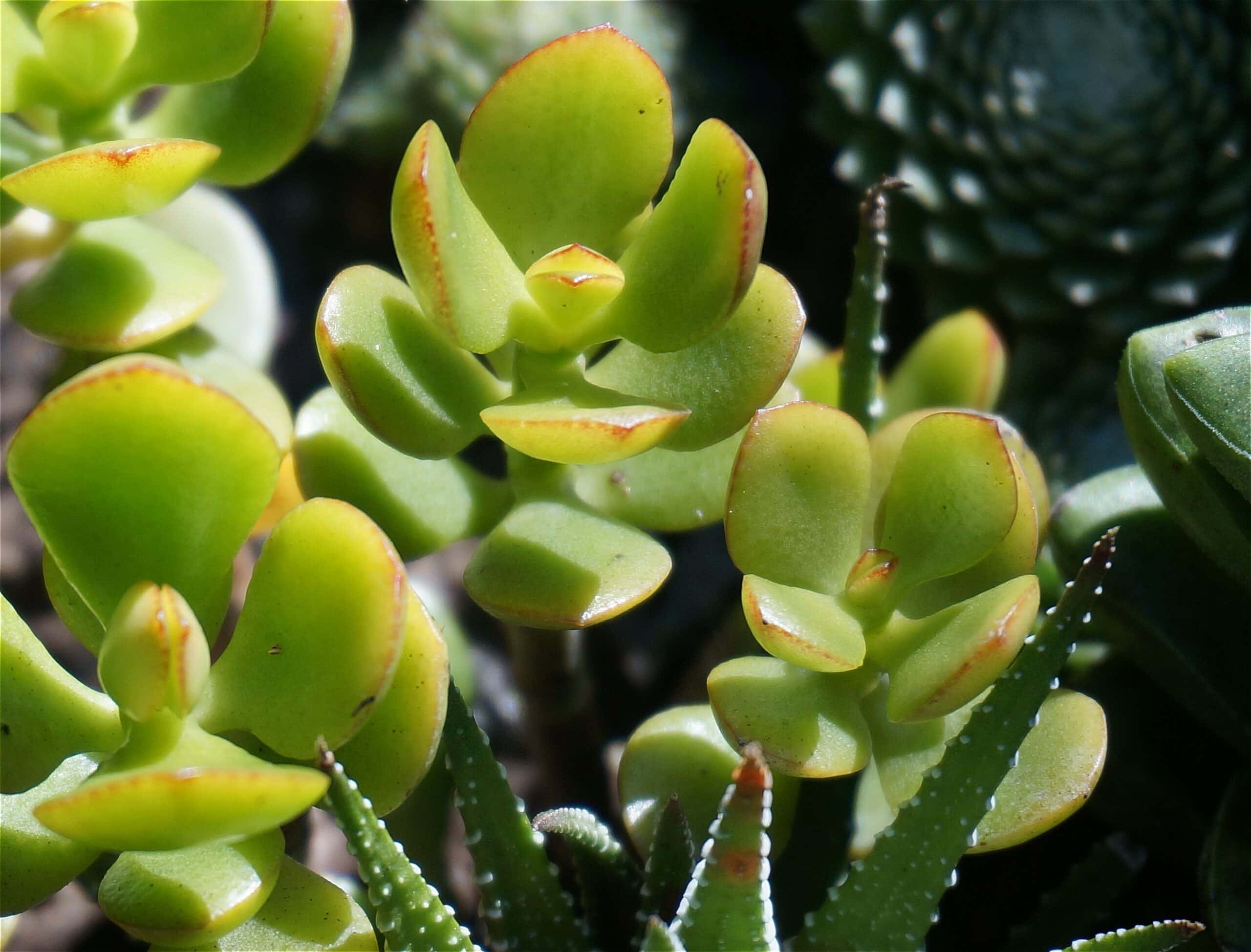
Baby Jade (Crassula ovata) is a favorite succulent in many homes given its excellent growing capacity. This small succulent thrives indoors and outside where it can grow into a dense shrub. With time, it forms thick branches that sprout small round leaves with flush red edges.
It’s an ideal plant for a beginner since it requires minimal supervision. It does well in USDA hardiness zones 9 to 10. It withers when there’s frost outside, so you might want to shelter it when it gets cold.
A mature Baby Jade can be 9 to 12 inches tall, producing white flowers during bloom season. The small succulent has a small root system, so it can grow in a small pot comfortably.
5. Living Stones (Lithops)

Living Stones or Lithops can easily be mistaken for small rocks on the ground. These small succulents native to Southern Africa form clumps of colorful pebbles when they mature. These are drought tolerant succulents ideal for hot areas.
The plant is a slow-grower and low-maintenance type of succulent. It grows just an inch tall with a pair of leaves separated by a fissure. There are also small holes all over these leaves. It’s an ideal succulent for USDA hardiness zones 10 to 11. You can have the plant outside in summer and indoors when temperatures drop.
A good cactus mix and minimal watering will suit this plant.
6. Zebra Plant
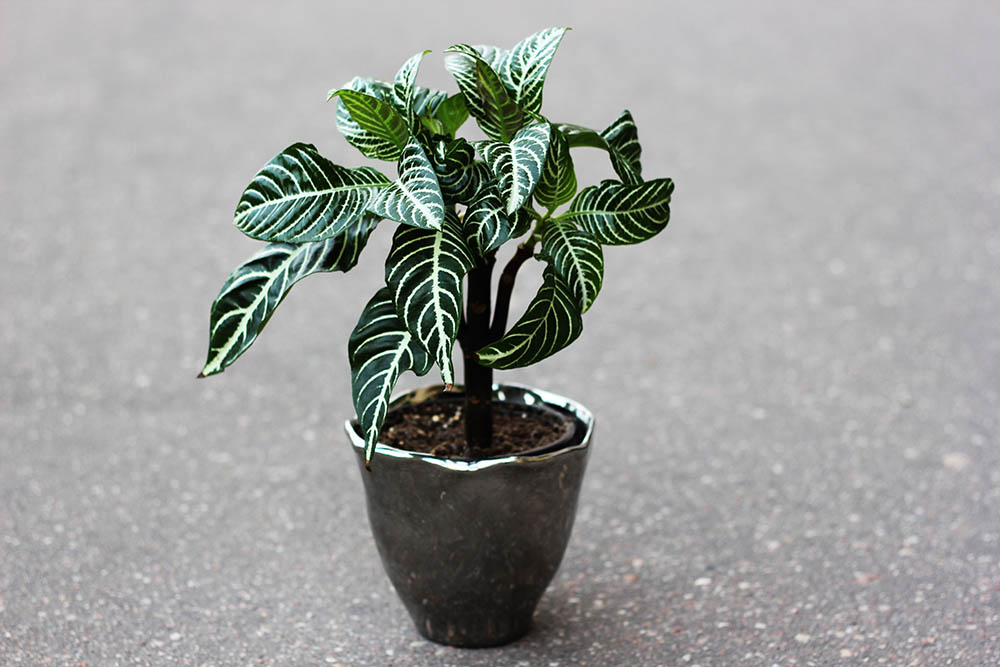
Many people confuse the Zebra plant with aloe but they have a significant difference. The succulent is native to Africa and it always remains small with a maximum height of 8 inches. The plant grows to have thick green leaves with white tubercles that form the zebra effect on the outer parts.
It is an easy house plant to grow since it thrives even in low light conditions. Still, it’s an ideal outdoor plant that requires about 6 hours direct sun exposure and USDA hardiness zones 9 to 11.
When watering, always allow the soil to dry out to prevent waterlogging. Also plant it on a well-draining succulent mix.
7. Sempervivum Cobweb Houseleek
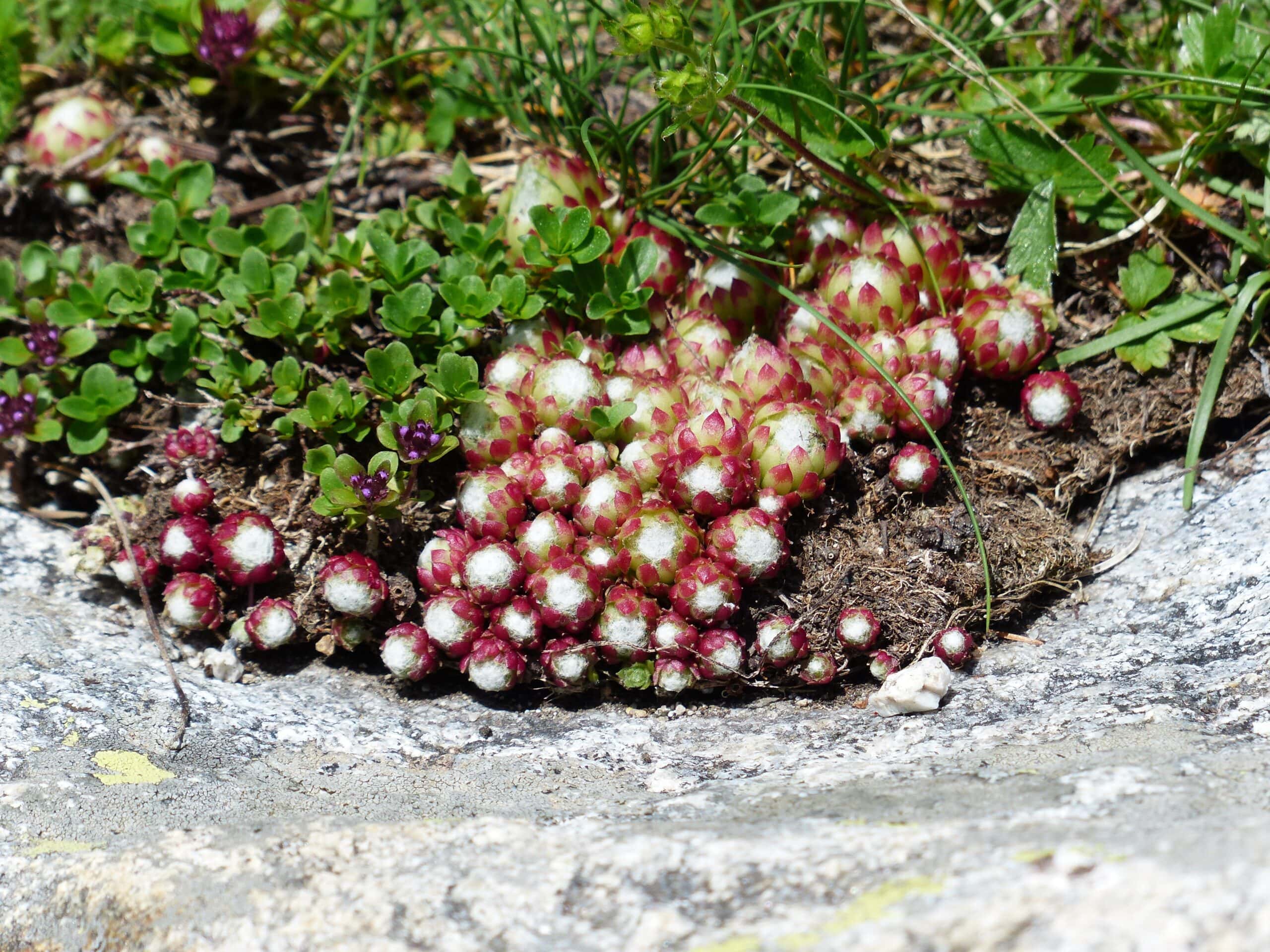
Have you ever come across a succulent that resembles a cobweb? It must have been a Sempervivum Cobweb Houseleek. It’s a cold hardy succulent that is grown outdoors all year round in many parts of the US.
The succulent is small with rosettes that are a maximum of 5 inches wide. It has tinted red leaves and a webby substance that forms on the surface as the succulent matures. Outside, the succulent suits USDA hardiness zones 5a to 8b.
It’s drought-tolerant but it could use some regular watering on well-draining soil. As with all succulents, let the soil dry out before watering.
The Cobweb Houseleeks take time to bloom, then die leaving lots of seedlings.
8. Blossfeldia liliputana
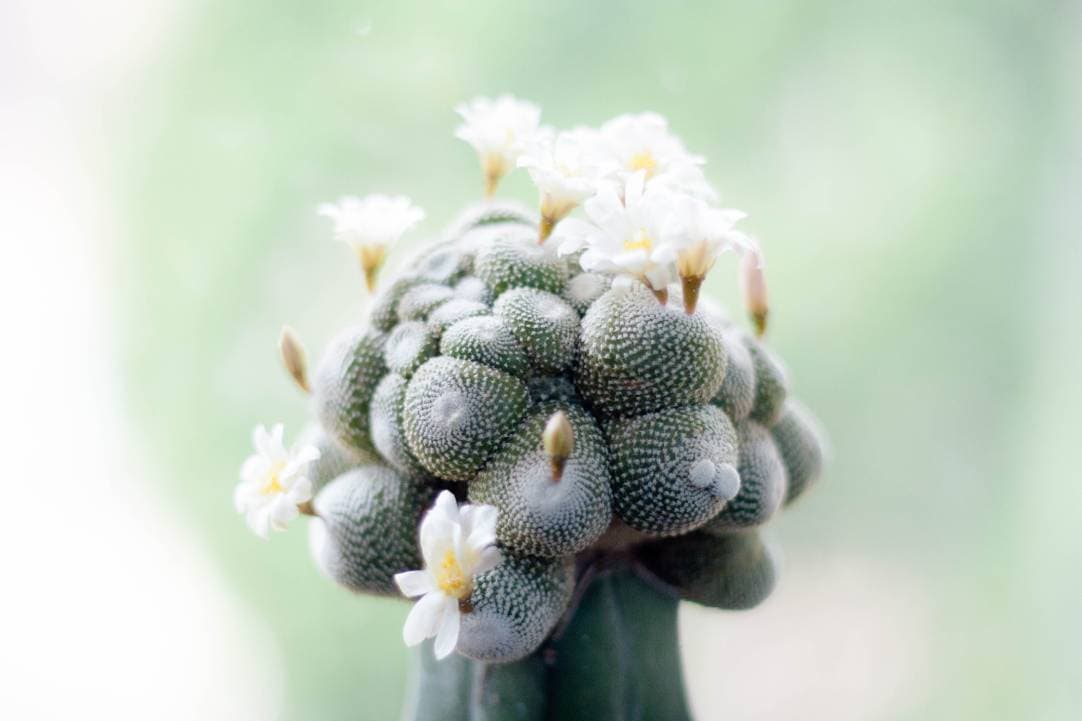
The Blossfeldia liliputana is a small succulent native to southern parts of Bolivia all the way to north-wester Argentina. In the wild, these small succulents love rocky areas where there are cracks and minimal soil. Even in severe drought, you’ll find the succulent thriving.
This is a clumping cactus that contains no spines or ribs. Though it can be tough to spot given its small stature, blooming season leads to loads of white and pink flowers.
It suits parts of the country with USDA hardiness zones 8b to 10b. As a solitary cactus, each stem can grow to be half an inch in width. Each stem is dish-shaped and gray-green.
9. Little Warty (Gasteria)
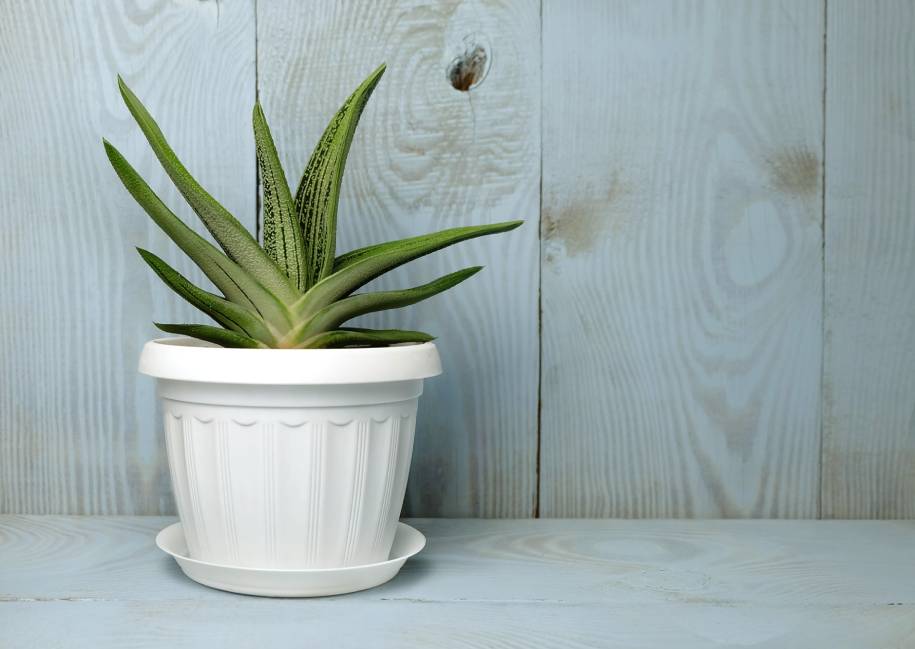
Little Warty is another adorable miniature succulent that suits indoor or outdoor settings. As it grows, it forms small clumps of lovely leaves that arrange themselves into rosettes. A fully mature Little Warty reaches around 8 inches in height and 6 inches in width. The leaves have a bright and dark green contrast with pale-white stripes or edges.
This succulent is most suitable for USDA hardiness zones 10a. Avoid frosty or cold conditions.
Though this is an ideal indoor and outdoor succulent, it can be toxic for animals. So, grow it away from pets or any other animals in the home.
10. Echeveria Amoena
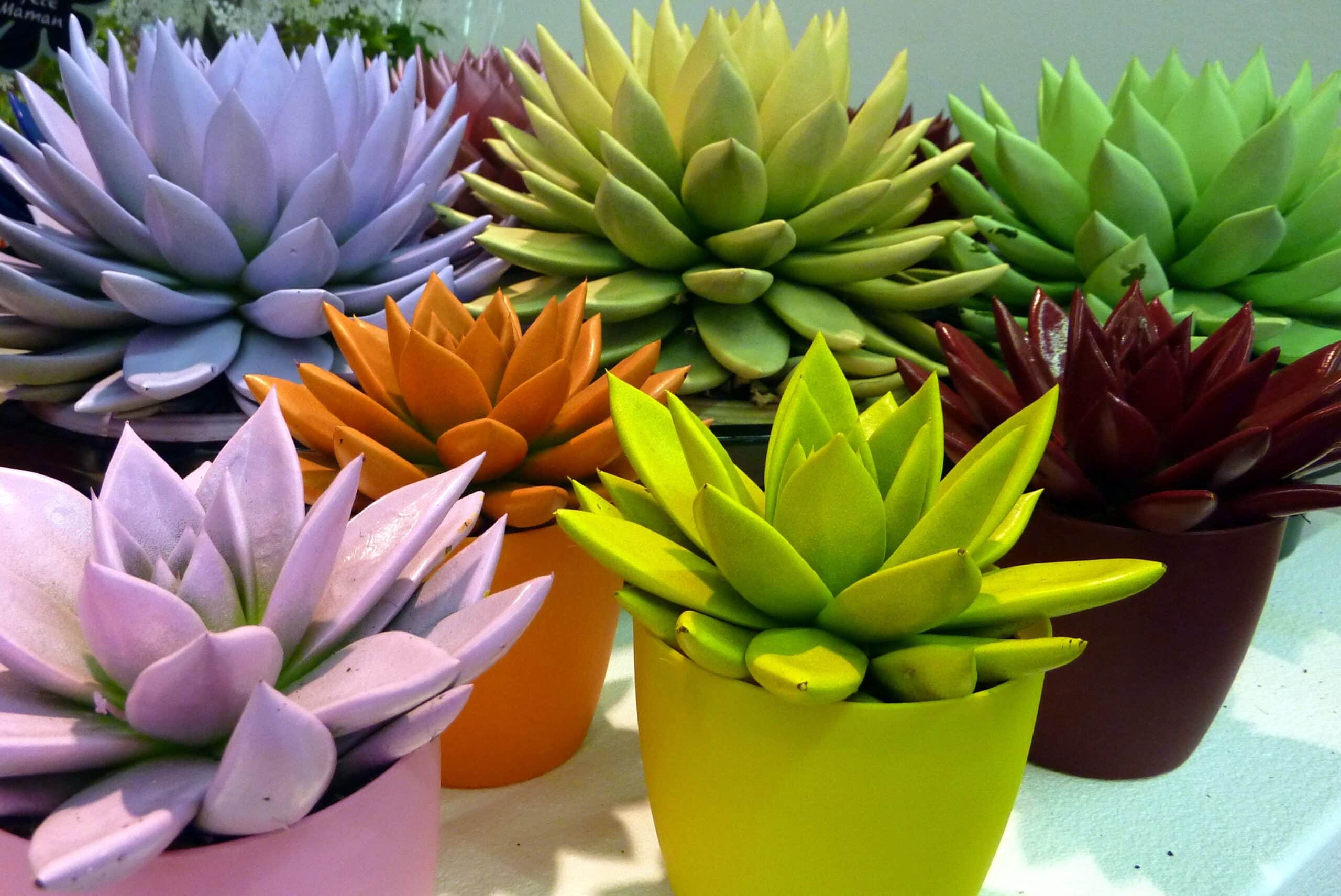
Little succulents look quite lovely and attractive when grown as indoor or outdoor plants. The Echeveria amoena is no exception. This succulent forms clumps with green leaves that have a blush of red and pink on the edges.
The Echeveria amoena can grow to be 2 inches tall while in full sun exposure. When grown outside, the succulent suits areas with USDA hardiness zones 9b to 11b. It blooms in spring to produce amazing red flowers.
Overwatering causes the succulent to die; water it only when the soil is completely dry. Also, keep it indoors when there’s frost.
11. Tiger’s Jaw
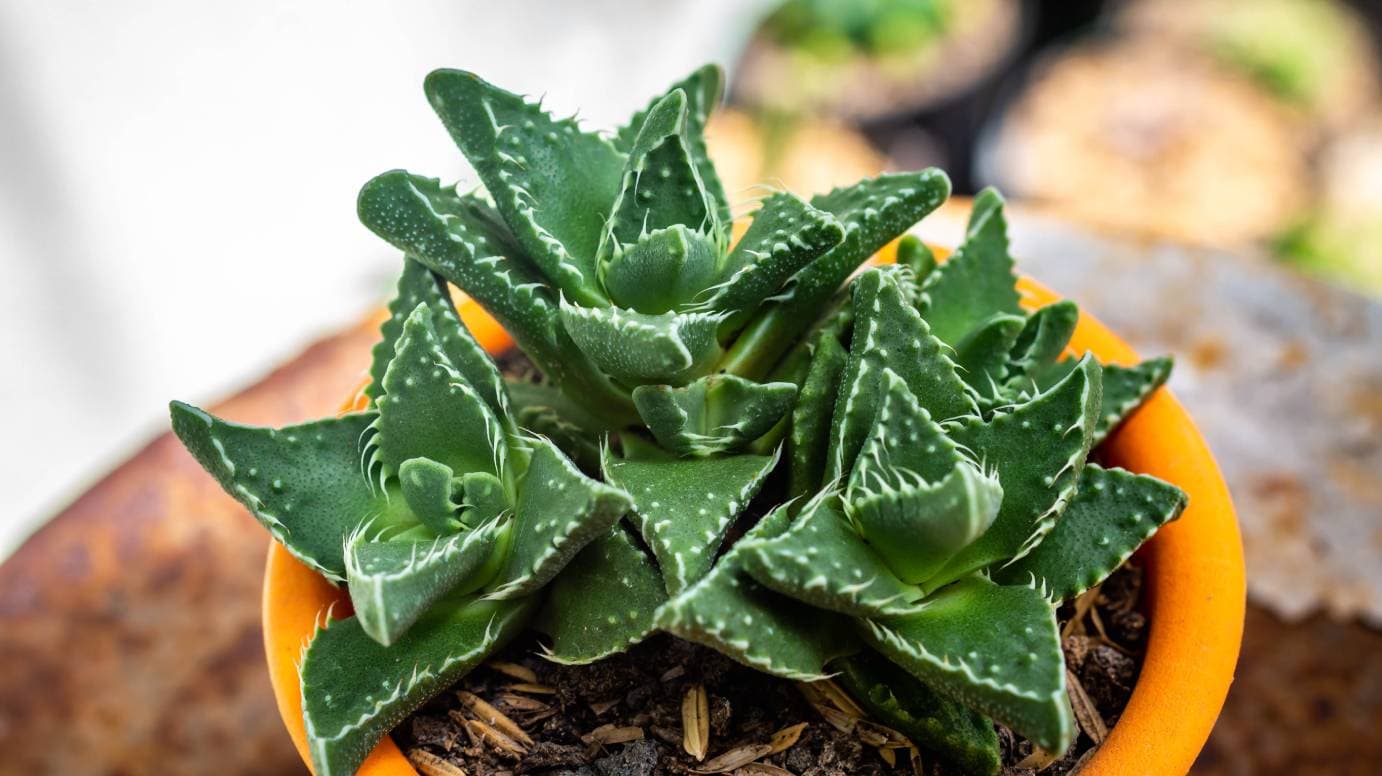
Have you ever come across small succulents with leaves that have tiny teeth on the edges? A good example is the Tiger’s Jaw, a miniature slow-growing succulent. The plant grows to form little rosettes with triangular fleshy leaves with spiny edges.
Tiger’s Jaw is ideal for a beginner who wants some house plants or succulents for an outdoor area. It suits USDA hardiness zone 9 to 11 with lots of sun exposure. A mature Tiger’s Jaw succulent can be 6 inches tall and 6 inches wide.
The plant blooms in fall and winter time producing lovely yellow flowers. Keep it outside in warmer zones, but ensure it doesn’t come into contact with frost.
12. Karoo Rose
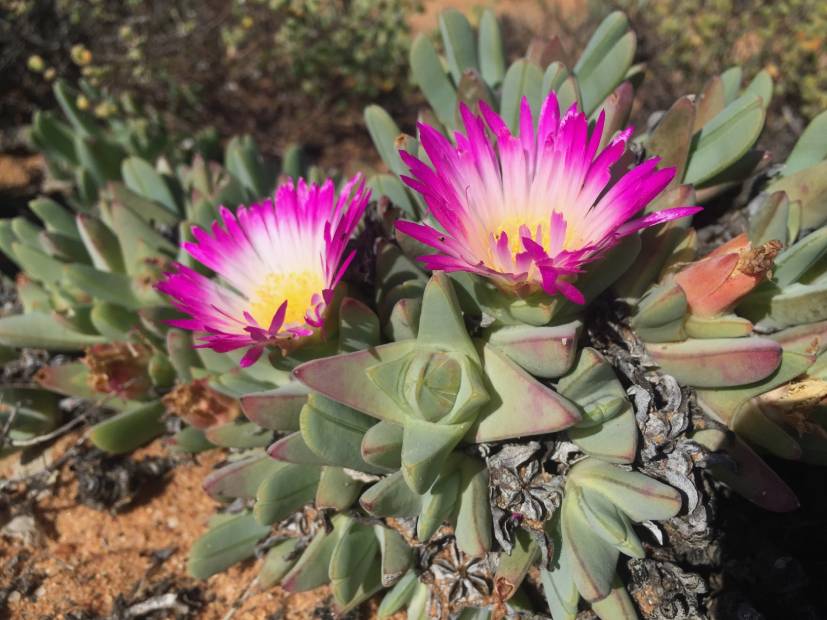
It never hurts to have unique plants indoors or outdoors like the Karoo Rose. It’s actually a one-of-a-kind succulent that is a favorite of ornamental plant collectors. The succulent is native to South Africa and is among the rare stemless plants.
The Karoo Rose has unique leaves that resemble rocks emerging from the ground. It grows well in stone crevices or rocky areas in the wild, so it’s most ideal for a rock garden. The grayish white leaves are quite thick and have a pink base.
You can grow the Karoo Rose outside in USDA hardiness zones 9b to 11b. The thick leaves store lots of moisture so the plant takes time before you have to water it.
13. Marble Buttons
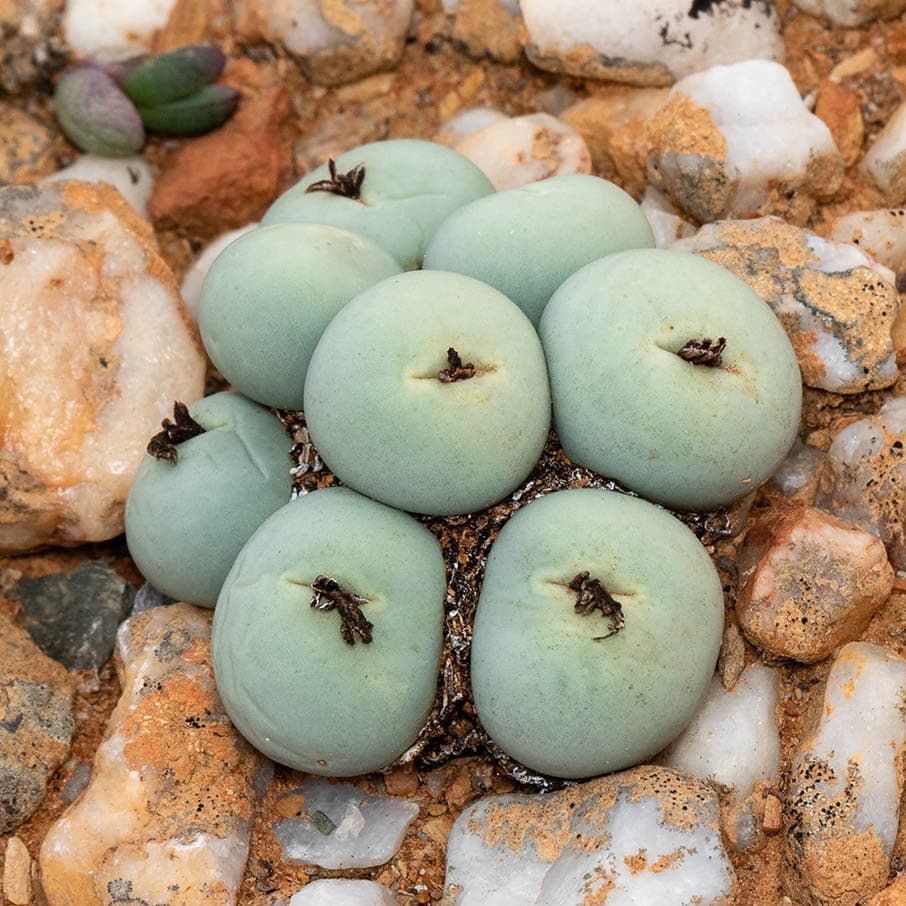
Marble Buttons are a delight when you have them growing in a pot or outside in a rock garden. The plant originates from South Africa.
These small succulents resemble small marbles. Each plant has two leaves that come together to create a spherical ball that’s about 1.2 inches in diameter.
The leaves of Marble Buttons are a pale yellowish-green and smooth without any hairs on the surface. Outside, the succulent thrives in USDA hardiness zones 10b to 11b. While some light is necessary for the plant to grow, it grows well indoors or under a shade. Too much direct sun exposure will burn the leaves.
14. Aloinopsis setifera
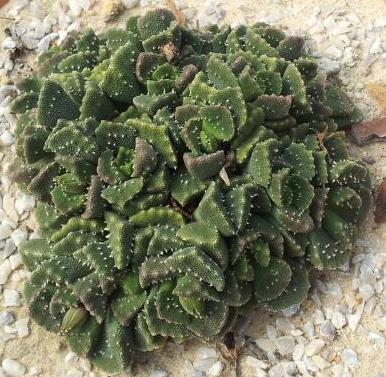
South Africa is home to numerous species of small succulents like the Aloinopsis setifera. It has a spoon shaped leaf with a rough outer surface. The succulent grows in miniature rosettes and has some thick roots. When it’s time to bloom, you’ll enjoy some lovely red flowers.
This succulent is among those that do well in cold weather. It grows in winter. However, you must ensure it gets lots of light during that season.
Aloinopsis setifera suits USDA hardiness zones 5b to 9b. A mature succulent will grow 2 inches tall and spread 12 inches wide. You can grow the succulent in a cactus mix, but avoid overwatering.
15. Panda Plant

How about adding some hardy succulents to your collection? A good example is the Panda plant with its beautiful velvety leaves. The plant has its origins in Madagascar.
The leaves are evergreen with brown spots on the tips. The Panda Plant thrives indoors and is perfect for a beginner plant collector.
It’s suitable for USDA hardiness zone 9a to 10a and isn’t a fan of frost or cold temperatures but full sun exposure.
16. Red Velvet
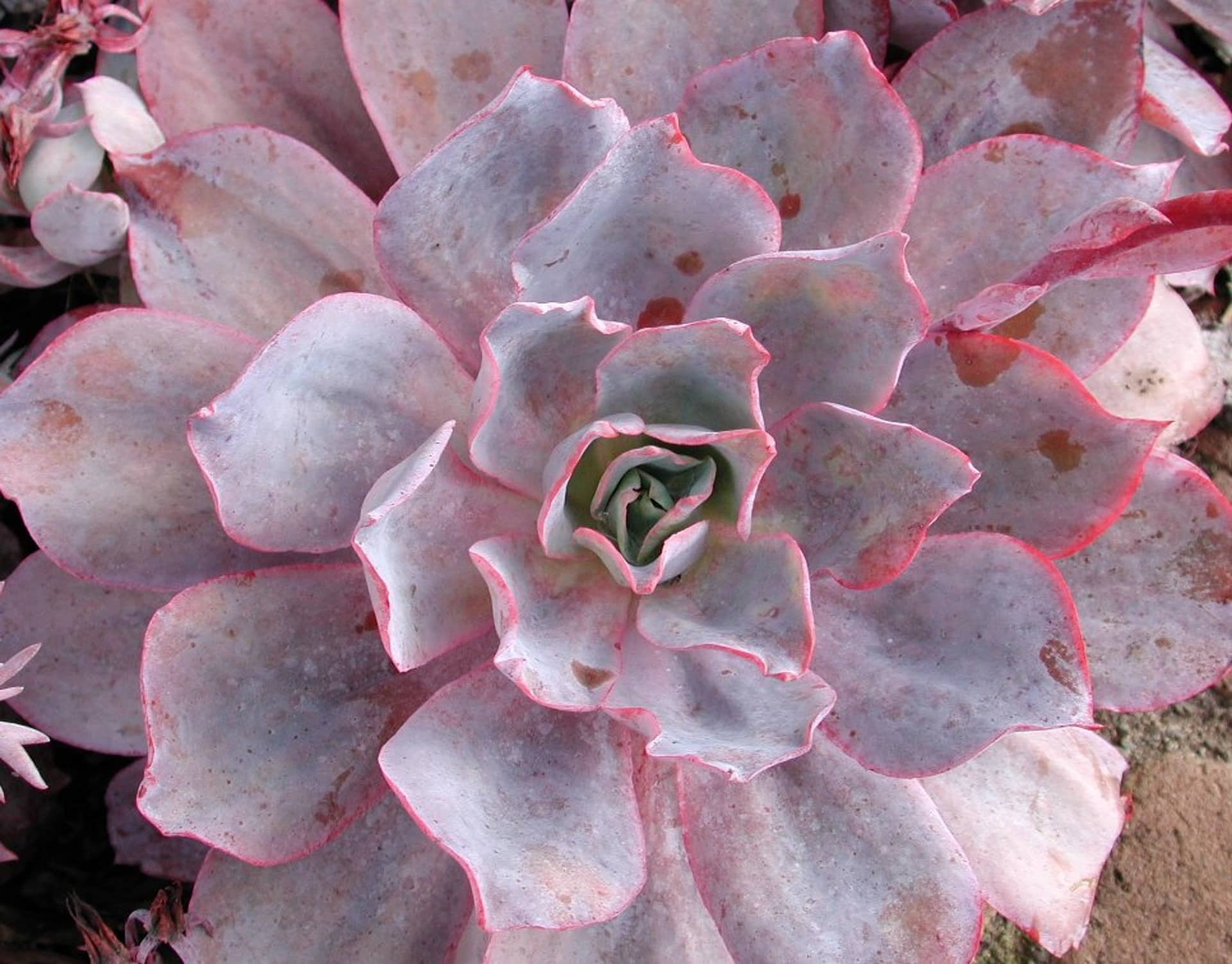
The Echeveria are among the easiest to grow succulents, therefore, ensure you check out the Red Velvet. It’s among the most beautiful small succulents that you can grow in pots indoors or in a garden. It has evergreen leaves with a tint of pink around the edges.
It’s ideal for indoor use because it doesn’t thrive in frost or cold conditions. It suits areas of USDA hardiness zone 10 to 11 with full sun exposure. The mature Red Velvet succulent will grow 12 inches tall to form a small shrub.
The plant tolerates most soils, but prefers 5.5 to 6.5 pH. Grow it on well-draining soil.
17. Pincushion Cactus
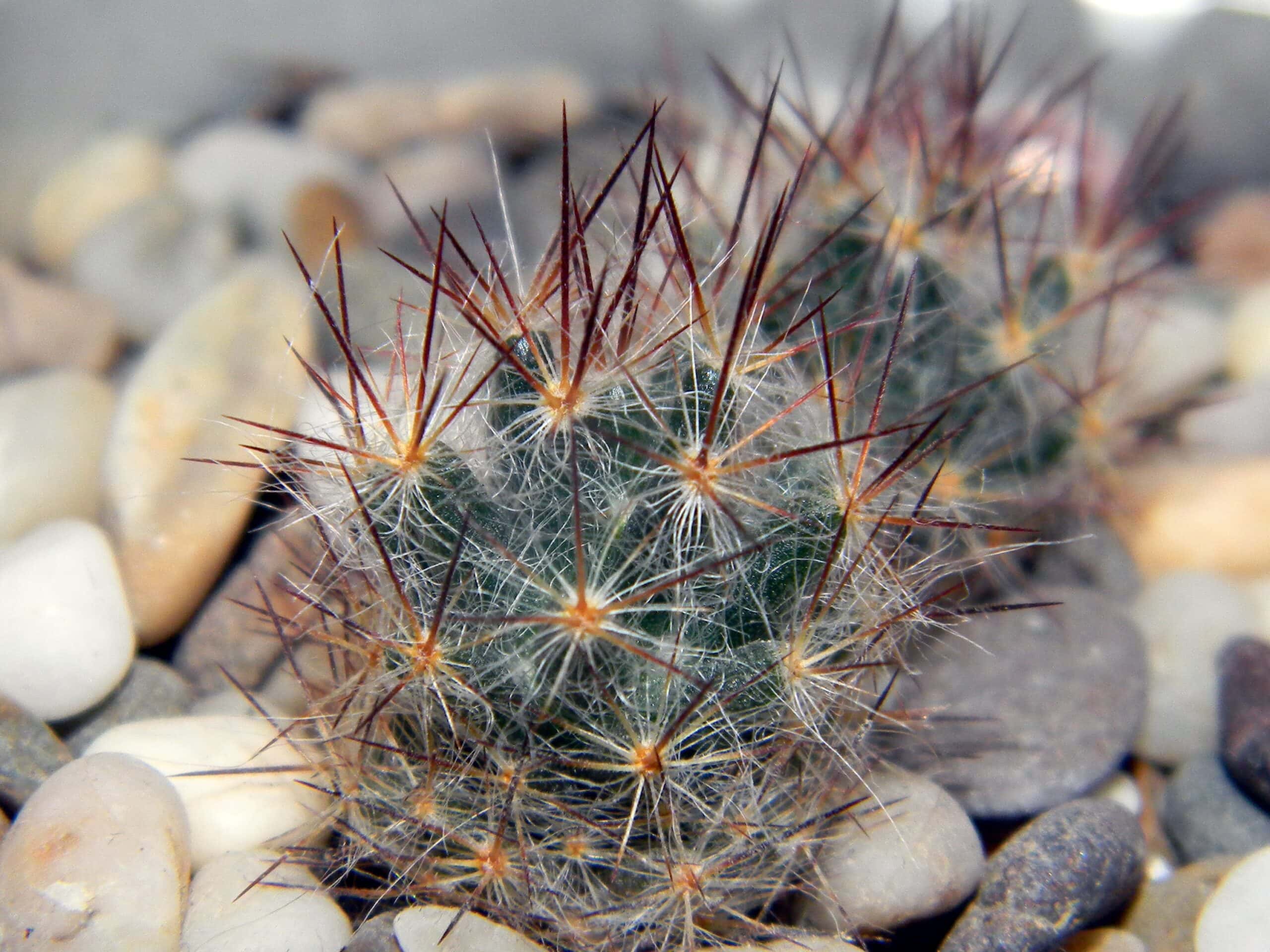
Pincushion cactus, or Mammillaria, is a drought tolerant succulent that originates from the Sonoran Desert. This miniature cactus is a perennial that grows 6 inches tall when fully mature. The cactus can grow to a ball or barrel shape that suits small pots in a container garden.
The name of the cactus is as a result of the white spines that cover the whole plant. You can grow it in USDA hardiness zones 8 to 10. Always handle it with thick gardening gloves to avoid the prickly spines.
18. The Transparent Succulent
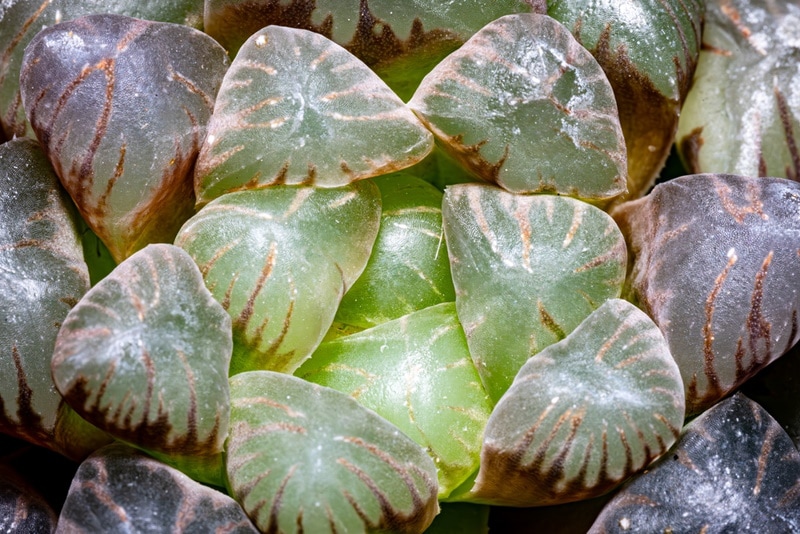
As the name suggests, the Transparent Succulent is a unique plant with transparent qualities. It grows forming clumps of bluish green leaves that clump to form rosettes. On the margins of each leaf, you notice the areas are transparent allowing light penetration.
The Transparent Succulent is a collector’s dream. It grows well in USDA hardiness zones 9 to 11. It’s prone to frost injuries, but also keep it under a shade on a sunny day. The succulent loves the indoors where it can get indirect sunlight.
19. Sweetheart Plant
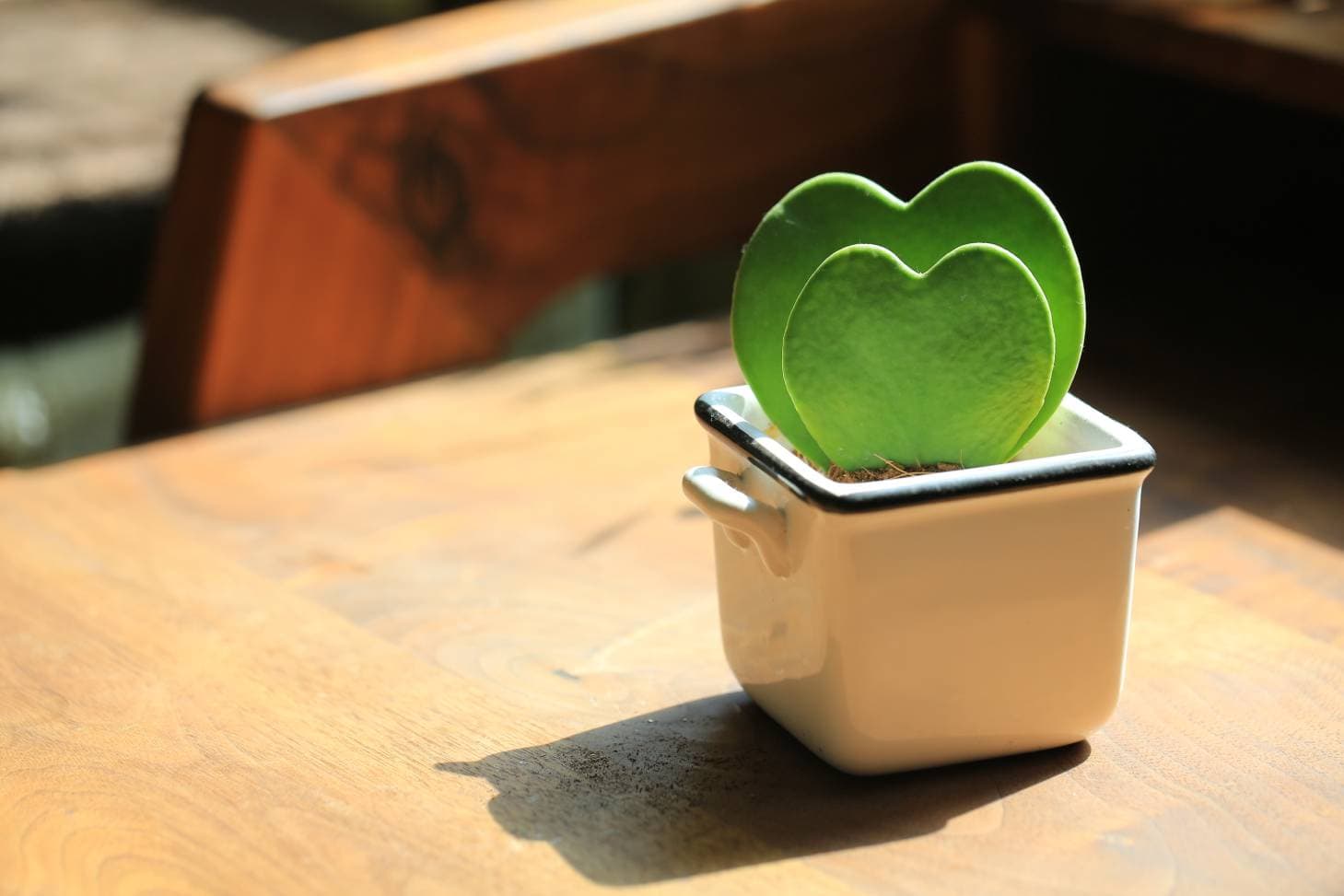
Imagine having some small succulents that resemble a heart-shape. That’s the Sweetheart plant that requires minimal maintenance indoors or outdoors. It’s native to Southeast Asia and grows a single thick leaf that can be 5 inches tall.
The Sweetheart plant thrives in USDA hardiness zones 10a to 11b. Keep it in an area where it gets lots of bright indirect light.
- Related Read: 20 Types of Sedum Succulents (with Pictures)
Conclusion
Small succulents are amazing and simple to care for. All you have to do is go through this article to note the ones you like. These succulents are unique with different colors suitable for both indoors and outdoors.
Featured Image Credit: Furiarossa, Shutterstock
Contents


